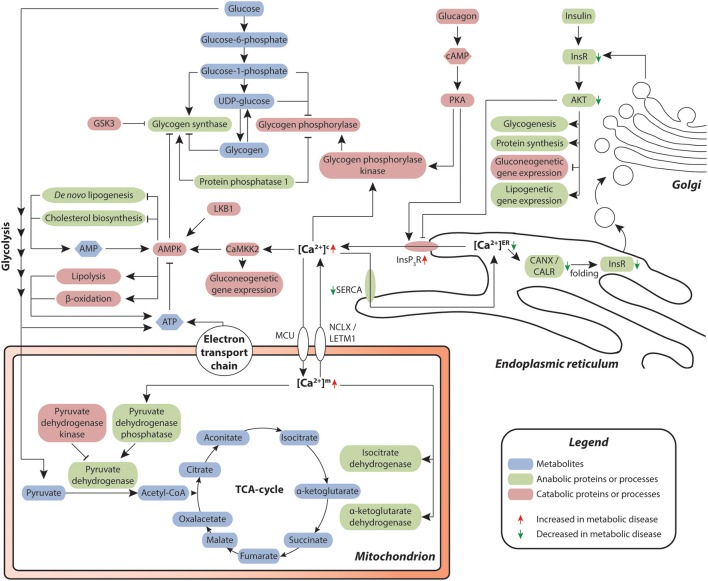Figure 3.
Hepatic calcium signaling in metabolic disease. Cytosolic calcium is of central importance for the orchestration of metabolic control in the liver. Chronic redistribution of calcium from the ER into the cytosol results in a diminished capacity of calcium-dependent folding in the ER, resulting in ER stress and unfolded protein response. Signaling via the Insulin-InsR-AKT axis contributes to a decrease of calcium efflux from the ER. As a result, less correctly folded insulin receptor (InsR) is produced, leading to reduced insulin signaling and reduced AKT-mediated negative feedback regulation of InsP3R-dependent calcium efflux from the ER, thus reinforcing insulin resistance. Metabolites are depicted in blue, proteins and secondary messengers involved in anabolic and catabolic processes are shown in green and red, respectively.

